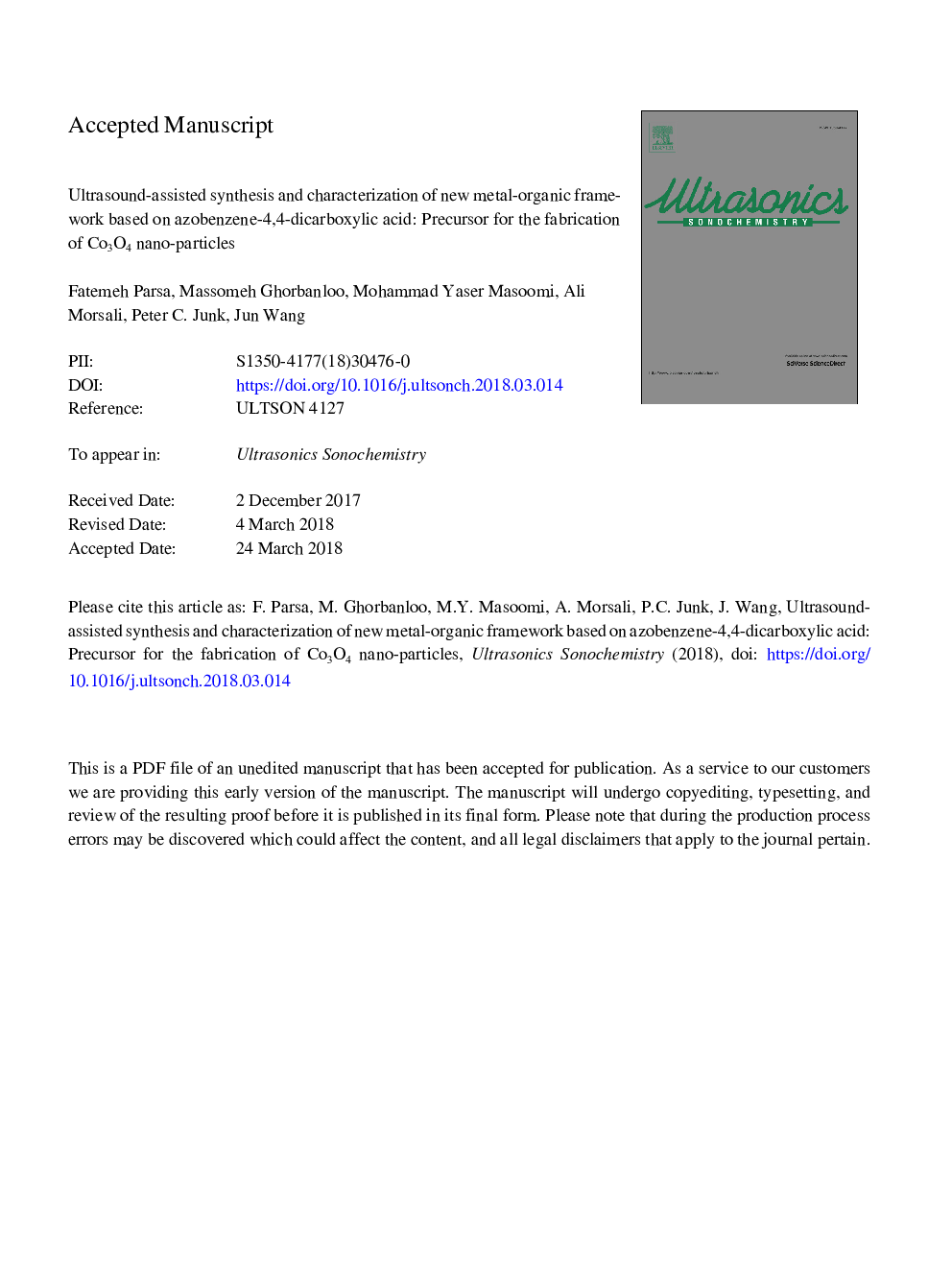| Article ID | Journal | Published Year | Pages | File Type |
|---|---|---|---|---|
| 7702518 | Ultrasonics Sonochemistry | 2018 | 20 Pages |
Abstract
Azobenzene groups are widely known as photochromic ligands thus are particularly interesting building blocks for designing receptors for neutral or charged guests. A new metal-organic framework, [Co3(adc)3(DMF)4].2DMF (compound 1) (adcâ¯=â¯azobenzene-4,4-dicarboxylic acid, DMFâ¯=â¯N,N-dimethylformamide), was synthesized by solvothermal methods and structurally characterized using X-ray crystallography and a range of spectroscopic techniques. Also, nanorods of compound 1 have been synthesized by a sonochemical process and characterized by field emission scanning electron microscopy (FE-SEM) and powder X-ray diffraction (PXRD). The effect of sonication time and concentration of the initial reagents on the size and morphology of the MOF have been optimized. Results indicate that decreasing of initial concentration and increasing ultrasound radiation time lead to small size nanorods of compound 1. Thus, ultrasound radiation affects the size of nanorods. After heat treatment, the cobalt ion-based metal organic framework nanorods can be converted into porous Co3O4 nanoparticles.
Keywords
Related Topics
Physical Sciences and Engineering
Chemistry
Chemistry (General)
Authors
Fatemeh Parsa, Massomeh Ghorbanloo, Mohammad Yaser Masoomi, Ali Morsali, Peter C. Junk, Jun Wang,
